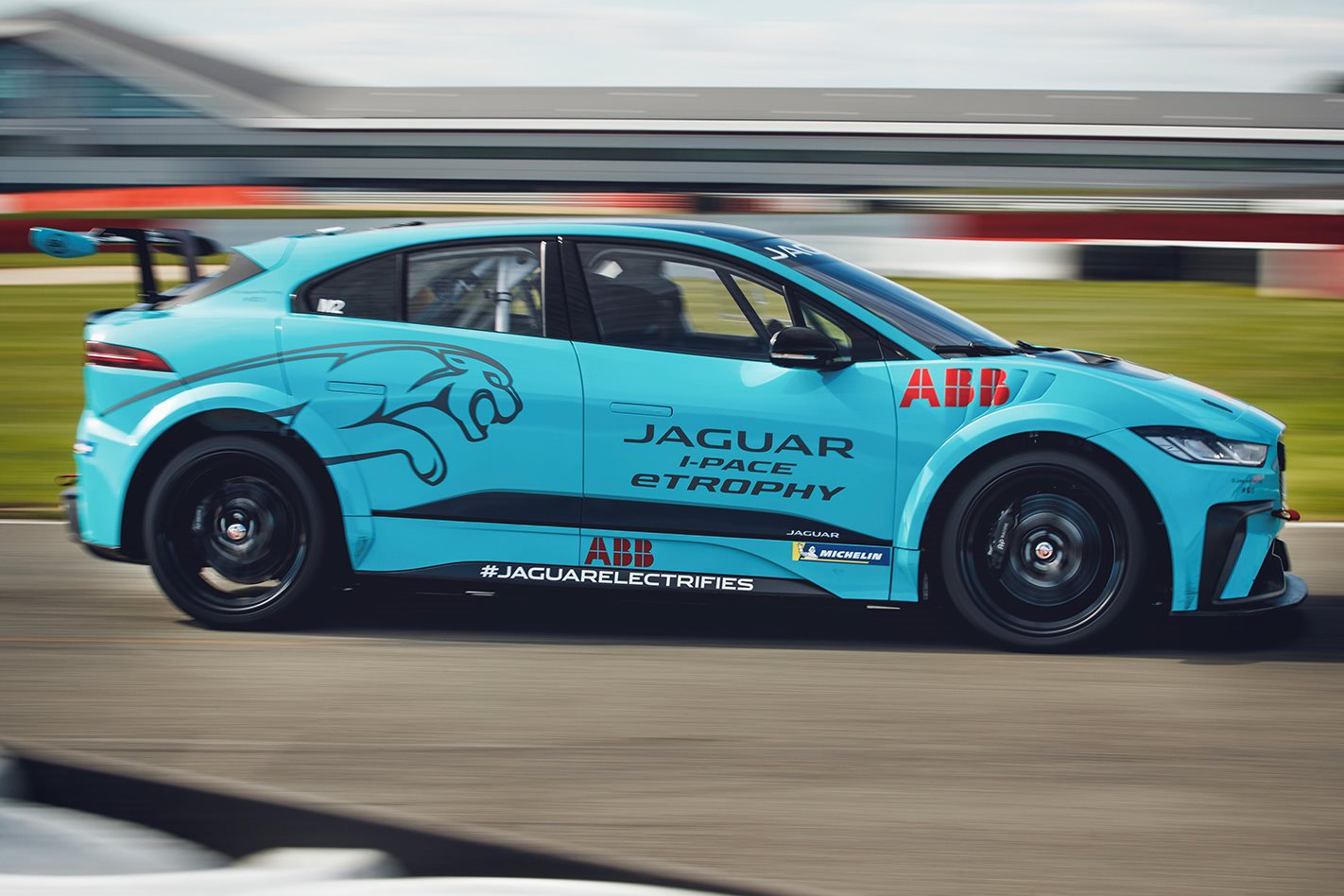TALK about culture shock – Simon Evans has raced and won V8SuperTourers in New Zealand, and a typical day at work consists of oversteer, lots of noise, then some lunch followed by a load more noise and oversteer.
But in December he’ll travel to Saudi Arabia with his younger brother Mitch, who’s competing in Formula E. He isn’t tagging along for moral support, but to race in the warm-up act, the Jaguar I-Pace eTrophy. It’s the world’s first one-make series for production-based electric cars, and a support category for 10 of Formula E’s 13 rounds.
“It is a lot to adapt to,” Evans admits. But the 27-year-old also recognises that this is the way motorsport is ultimately heading – better to be early to the party and get the edge.
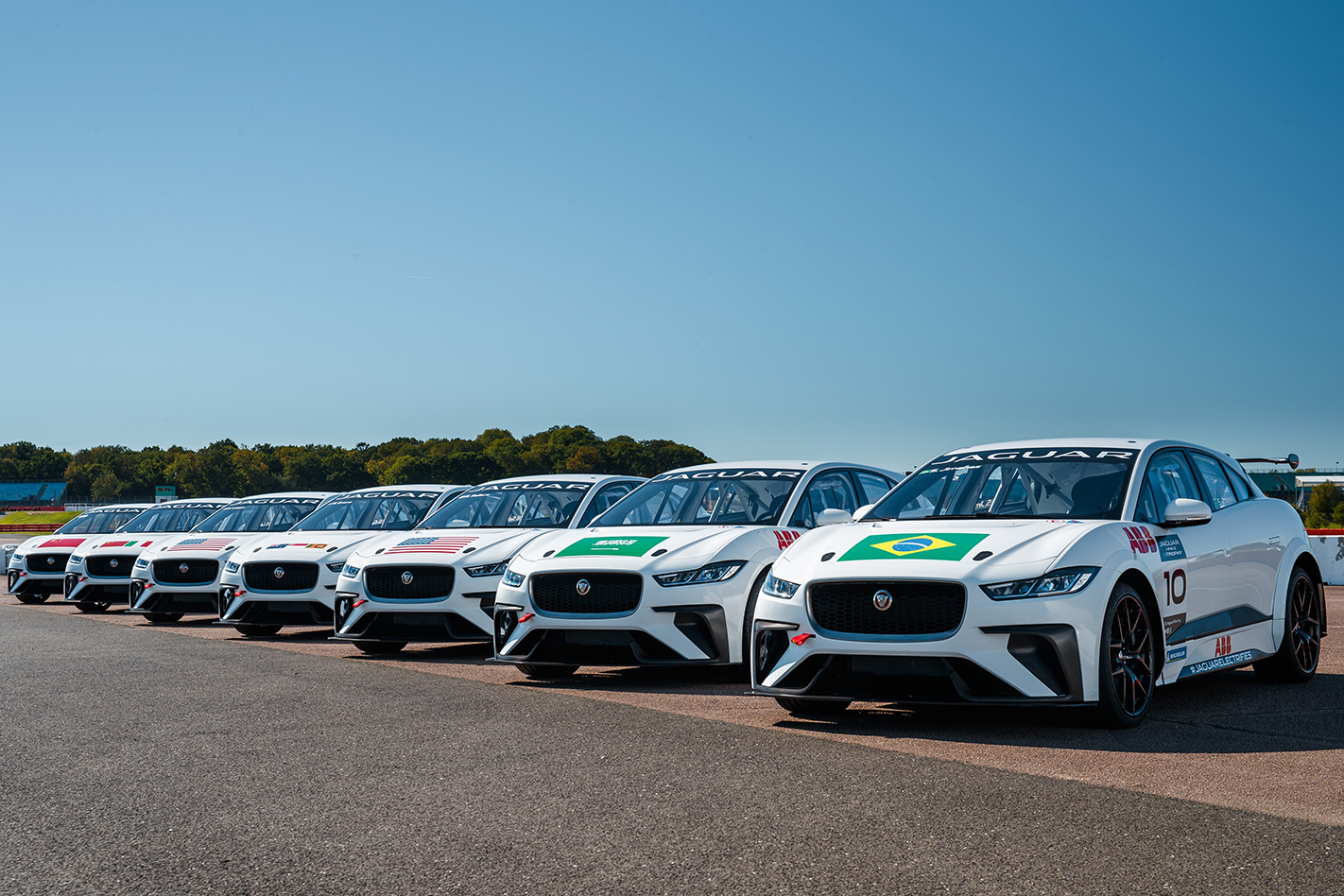
Today, Wheels is experiencing first-hand this new era of production-car motorsport with a drive on Silverstone’s Stowe circuit – a narrower, tighter, slower Silverstone that better replicates Formula E’s street circuits.
An electric SUV is not the most obvious basis for a racecar, but the I-Pace certainly does a passable impression in Silverstone’s pit garages.
The body is lowered 30mm, new carbonfibre bumpers and wheel arch extensions cover 22-inch wheels, a more aggressive bonnet increases cooling to the EV propulsion system, and a Mecano rear wing generates, well… more in fan appeal than it does in downforce at the relatively low street-circuit speeds the racers will experience.

Cars will be run by World Rally Championship team M-Sport – the Brits who also part-manage Bentley’s Continental GT3 campaign and developed Renault’s World Rallycross Megane – and drivers arrive and drive for £650k (approx. $1.2m) per season, including £200k ($370k) to buy the car – though there’s also a £95k ($175k) per-year lease option.
Jaguar Land Rover Special Vehicle Operations takes care of the build. The road car’s aluminium bodyshell carries over, as does its 90kWh lithium-ion battery, still mounted low and filling the I-Pace’s wheelbase. There are also the same 145kW electric motors at each axle for all-wheel drive, but while the racers can choose the road car’s 50/50 front-to-rear torque split, we’re running 48/52 for less understeer. It also helps keep the more tightly packaged front motor cooler.

Performance mirrors the road car’s, with approximately 290kW and 381Nm from a standstill. It equates to a 0-100km/h time of 4.5-seconds and 198km/h top speed.
Double-wishbone front/multi-link rear suspension essentially carries over, but there are extensive modifications. There are also AP Racing brakes, and rubber that the Michelin engineers describe as most comparable to a Super Sport road tyre – they’ll last a full race weekend whatever the weather.
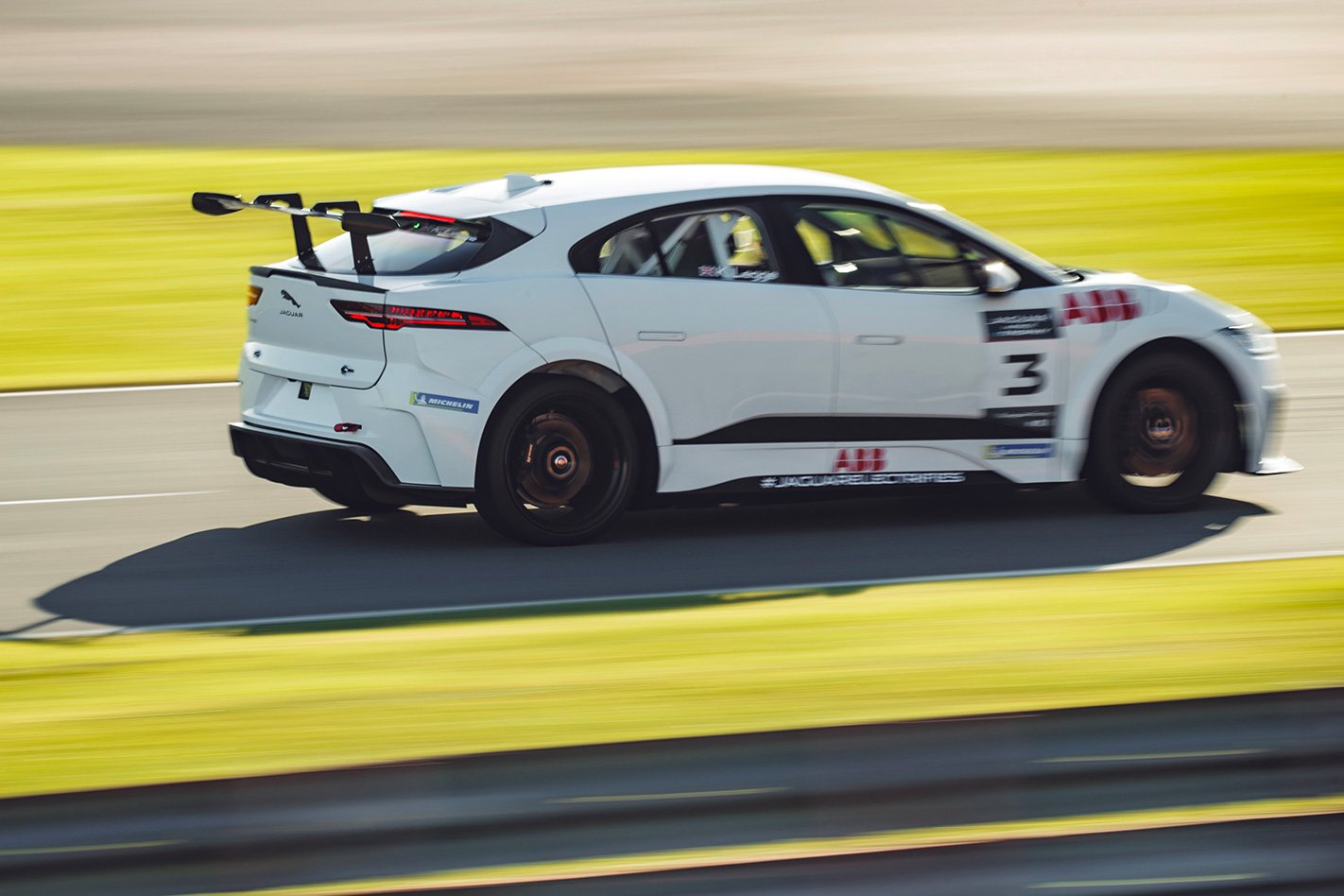
The interior is generic racecar: stripped bare and fitted with an FIA-approved touring car rollcage, digital dash and small suede steering wheel with a few set-up options including ABS assistance, re-gen, and brake bias, but the drivers don’t need to manage battery charge during a race –they’ll just drive as hard as they can.
The transmission interface of the road car is one of only a few familiar features, looking chintzy like Christmas decorations in such stark surroundings. Foot on brake, press D, and we’re rolling out onto the track.
The eTrophy feels like an alien, contradictory experience straight off the bat. Everything – your helmet, the bucket seat, the minimalism – feels stereotypically motorsport, but you’re aware that you’re sitting higher than in most racecars, and in a larger car too.
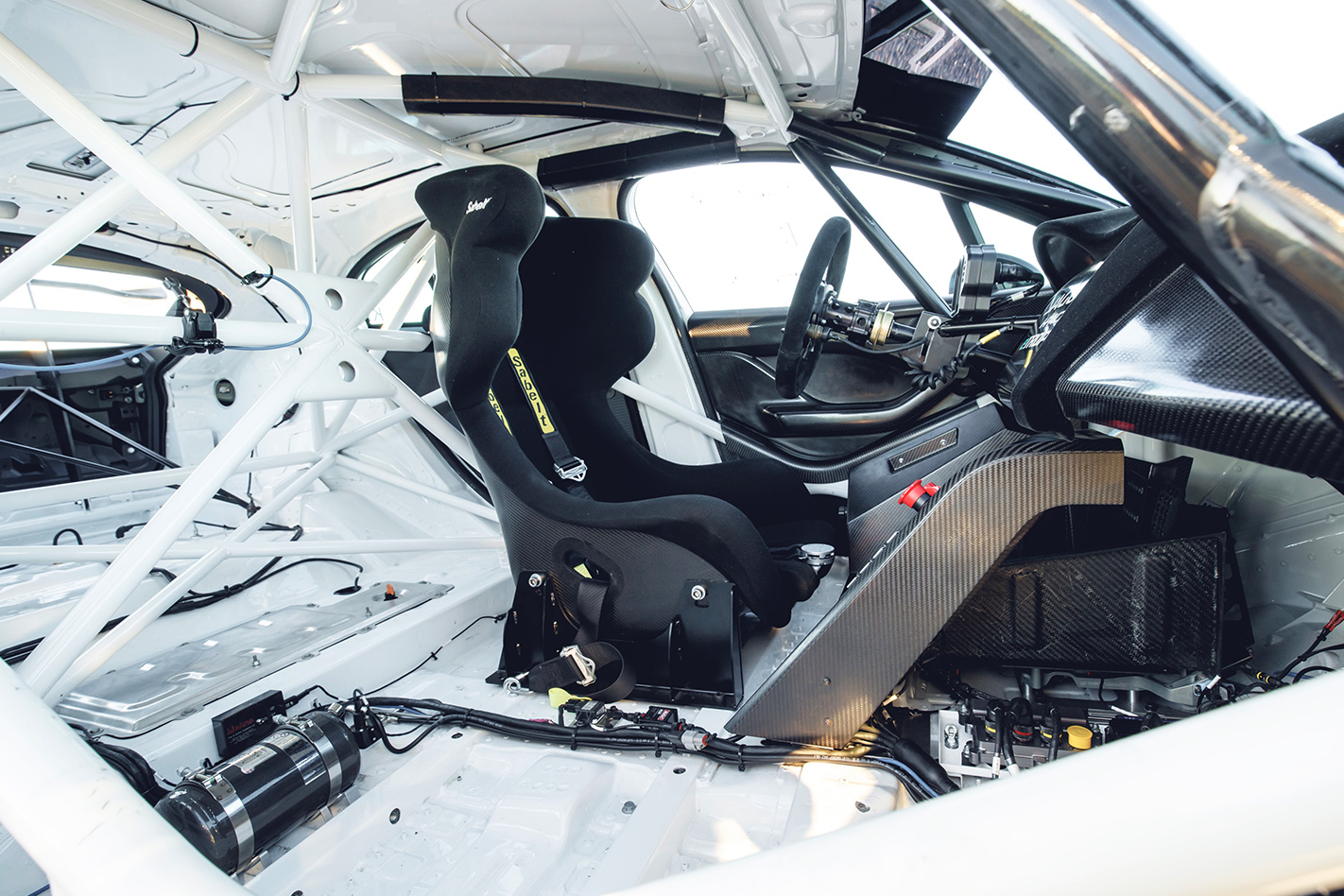
Then there’s the calm – the light hum of electric motors, the rushing wind noise, the fact that you’re not changing gears, not looking at shift lights or rpm.
It’s that disquieting feeling that you’ve left home without something, unable to pinpoint exactly what. Only the pronounced squeal of brake pads and chirrup of tyres really breaks the silence.
Weight is down 225kg versus the road car – though still heavy at 1965kg – but I can’t say the eTrophy feels any quicker. Perhaps that’s because we’re never accelerating from a standstill, maybe because of the space of a racetrack. Whatever, speed builds steadily and quietly, like parking on a very steep hill and accidentally leaving the handbrake off. You have time to think, to look around, to really concentrate on your braking point.

Leaving it as late as I dare into one of Stowe’s big stops – witches’ hats, grass and Armco filling the windscreen – suddenly the speed gains context and drama and I jump on the brakes.
Re-generative braking is still in the mix because the I-Pace couldn’t do 25-minute races on a battery charge without harvesting some juice under braking. But pedal feel is good, the blend between discs and pads and up to 0.4g of re-gen apparently seamless, and more than anything, the four-piston calipers do a great job of clamping onto those discs and hauling down such a hunk of metal.
Earlier, Evans had said he wanted a “little more feel, a bit more bite” from the brakes, and had told me to go late, but not too late. “It’s important to make the tyre work, and stop the tread blocks moving around and overheating. The driver who does that will come out on top. But if you go in too hard with the ABS, the blocks will move around.”
I feel the ABS stutter that Evans flagged up, but the speed wipes off quickly. Turn in and the steering is fast and responsive but almost eerily light, there’s more body roll than other racecars, and the eTrophy feels stubbornly one-dimensional in its cornering attitude, like you can either keep it neat and tidy or overdrive and get a load of understeer. You need to be patient, and because torque floods instantly through the throttle, you have to feed it in like you’re diffusing a bomb.
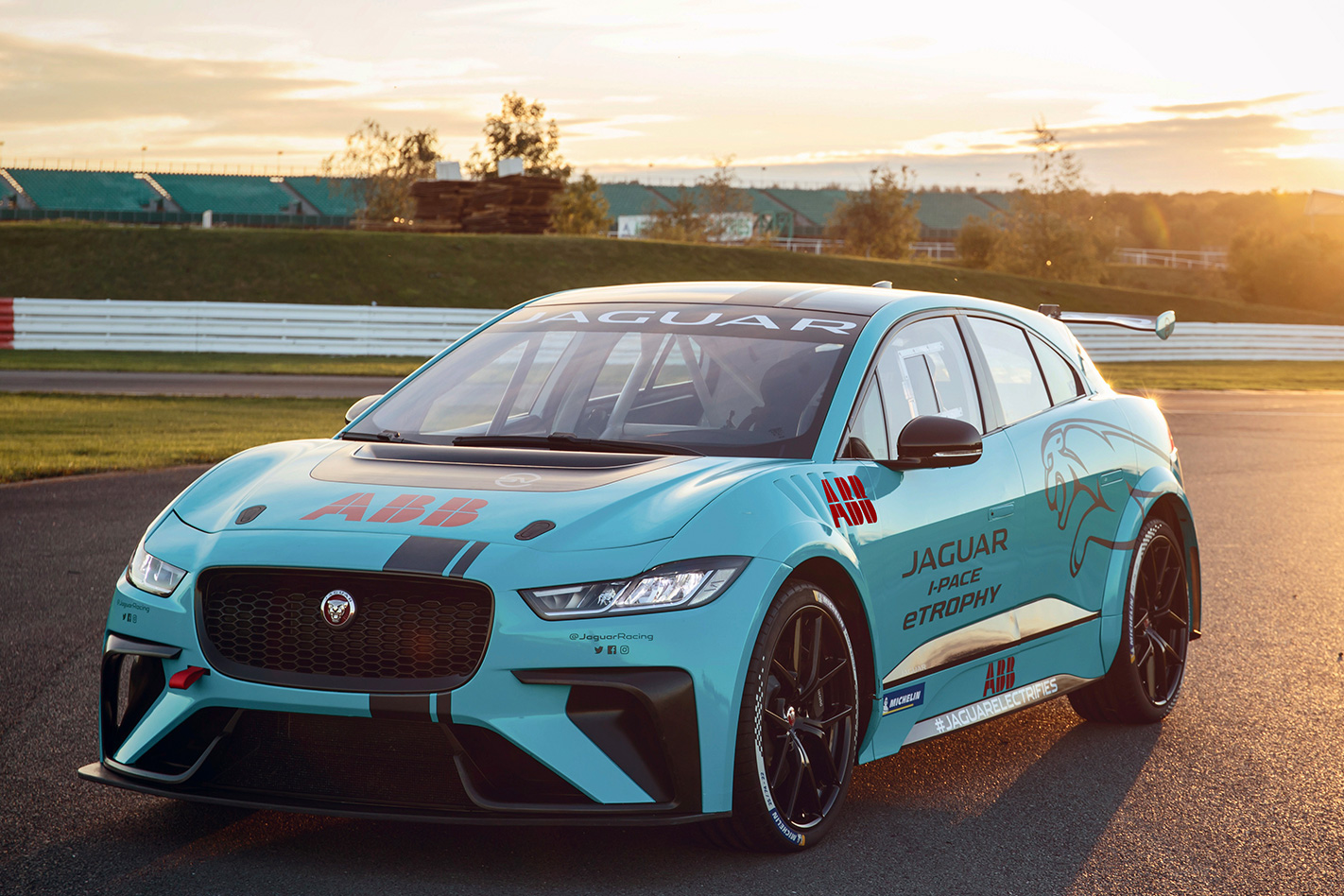
But the I-Pace does not drive like a two-tonne SUV – it controls roll neatly, and feels far nimbler and responsive than the kerb weight suggests, thanks to the bulk of the batteries and electric motors nestling low down between the axles.
This is partly why the eTrophy feels so enjoyable through the faster right-left flick after the start-finish straight – the relative softness of the chassis and lack of mechanical grip unlocking a certain throttle adjustability.
“It doesn’t feel like 700kg more than I’m used to,” says Evans, “even through the transitions.”
You can pitch it into the corner, nose gripped up, rear end light, scrubbing off the excess speed you’ve carried in with a little oversteer, then using the all-wheel drive and instant torque to carry the speed down the next straight.
It’s fun, it’s a challenge, but when I pit I don’t quite have that giddy euphoria that defines most racecar drives. I’d like less roll, weightier, more feelsome steering, and above all, I want to go faster and feel more excitement.
Then again, I wasn’t racing hard against 20 identical cars on narrow street circuits with little margin for error. And the racing should be hard. The fastest drivers, estimates Evans, will be separated by hundredths of a second, and Jaguar expects many of those new carbonfibre parts to be frequently damaged.
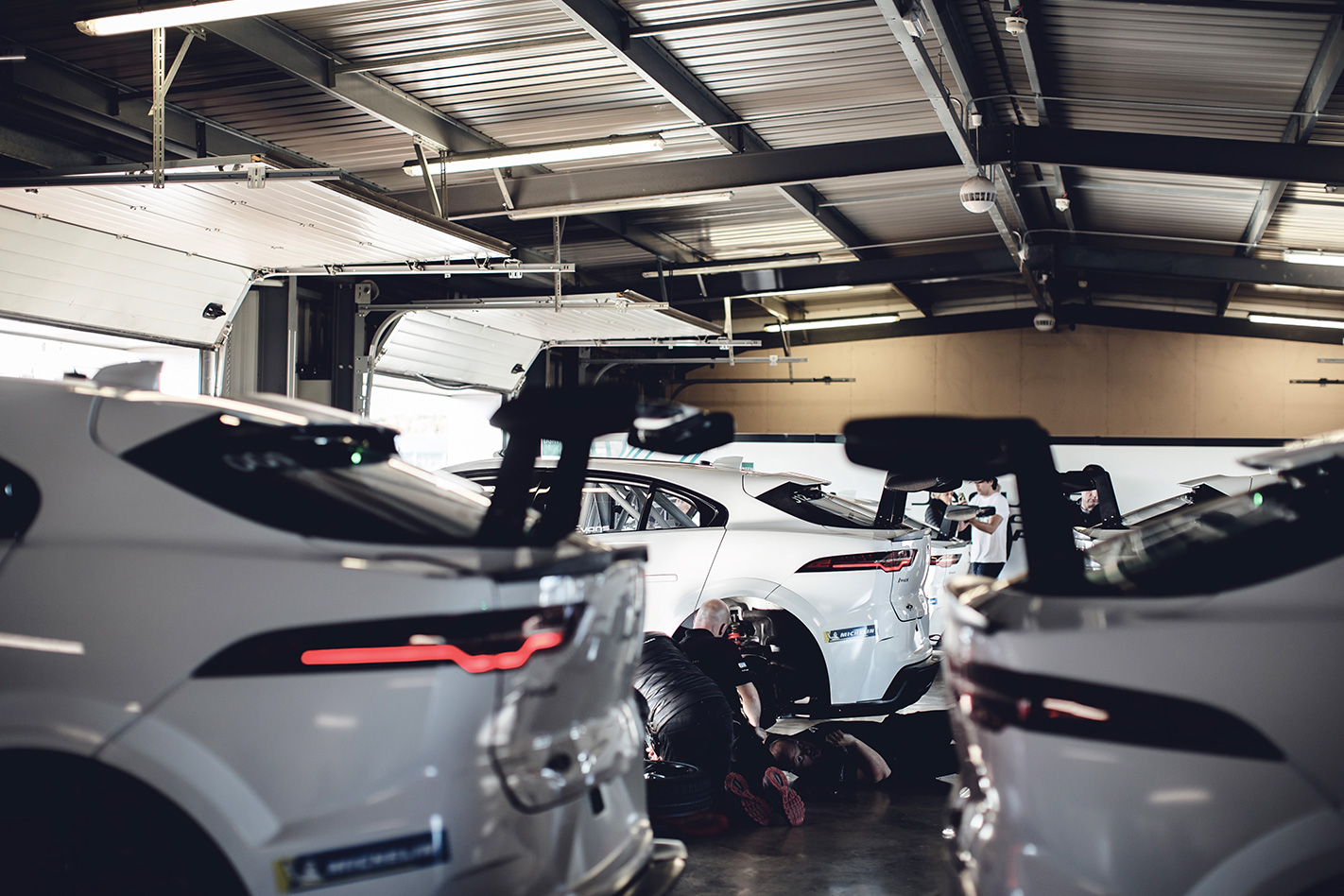
“It should be super-close and exciting to watch,” reckons Evans.
Let’s hope so. Because if the eTrophy is to convince as the future of motorsport, it needs to put on a damn good show.
SPECS
Model: Jaguar iPace eTrophy Engine: Twin permanent magnet electric motors Max power: 298kw Max torque: 700Nm Transmission: Single-speed Weight: 1965kg 0-100km/h: 4.5sec Fuel economy: zero exhaust emissions Price: $370k

